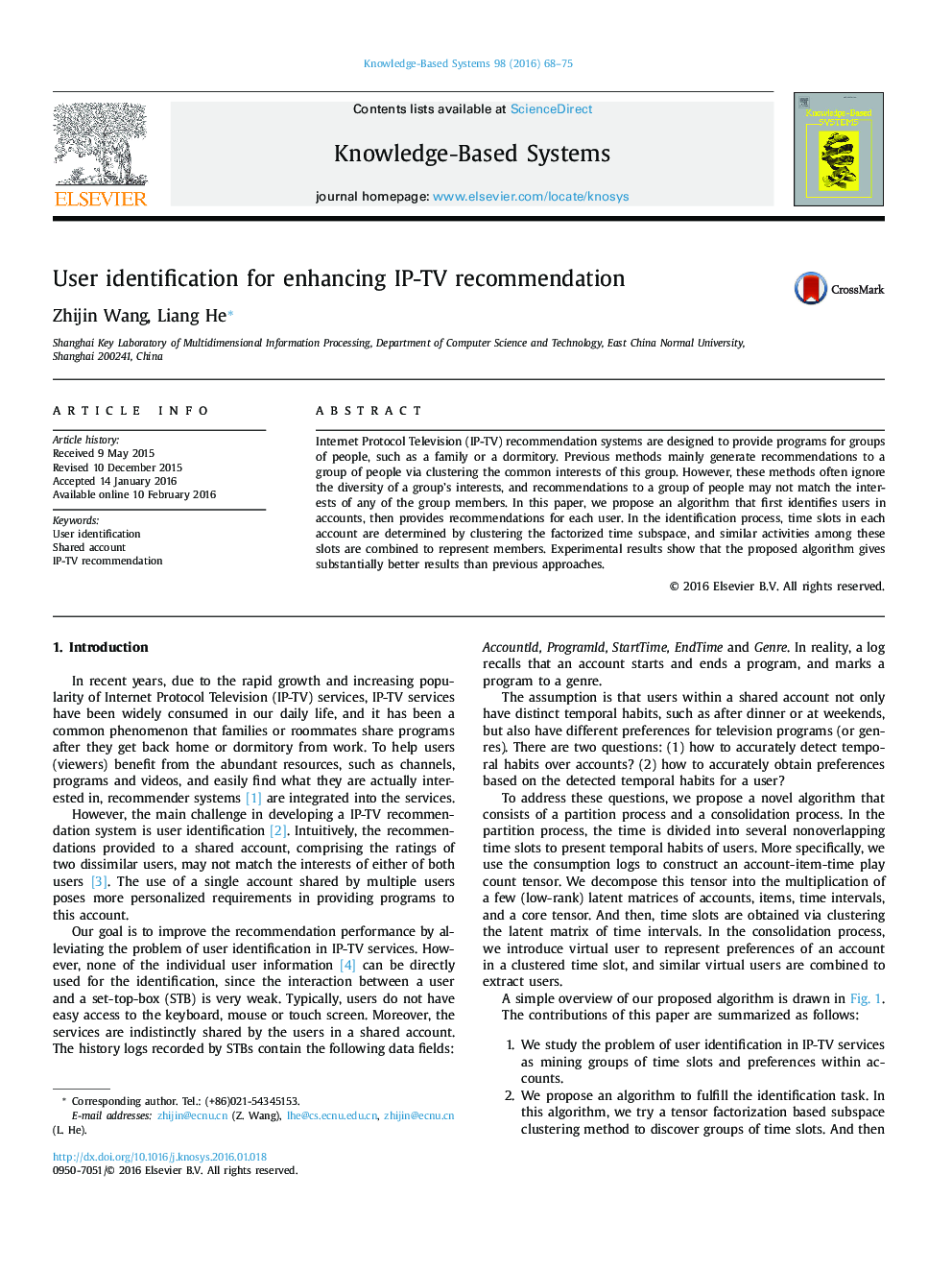| Article ID | Journal | Published Year | Pages | File Type |
|---|---|---|---|---|
| 402527 | Knowledge-Based Systems | 2016 | 8 Pages |
•In contrast with group recommendation which recommends items for groups of people, this approach provides recommendations for members.•The user identification problem is studied as clustering periodical temporal habits and combination of similar activities in each account.•Experimental results show that the proposed algorithm gives substantially better results than previous approaches.
Internet Protocol Television (IP-TV) recommendation systems are designed to provide programs for groups of people, such as a family or a dormitory. Previous methods mainly generate recommendations to a group of people via clustering the common interests of this group. However, these methods often ignore the diversity of a group’s interests, and recommendations to a group of people may not match the interests of any of the group members. In this paper, we propose an algorithm that first identifies users in accounts, then provides recommendations for each user. In the identification process, time slots in each account are determined by clustering the factorized time subspace, and similar activities among these slots are combined to represent members. Experimental results show that the proposed algorithm gives substantially better results than previous approaches.
